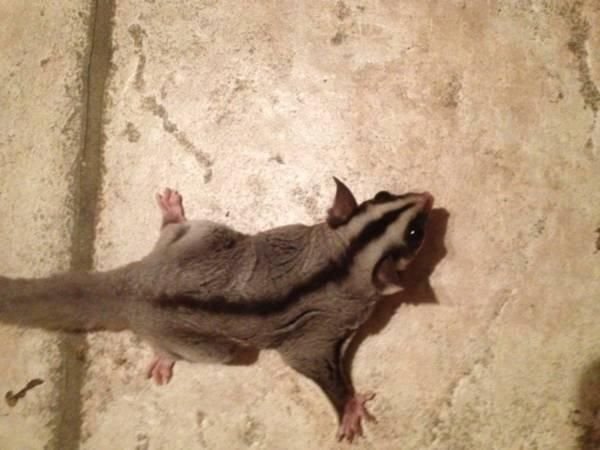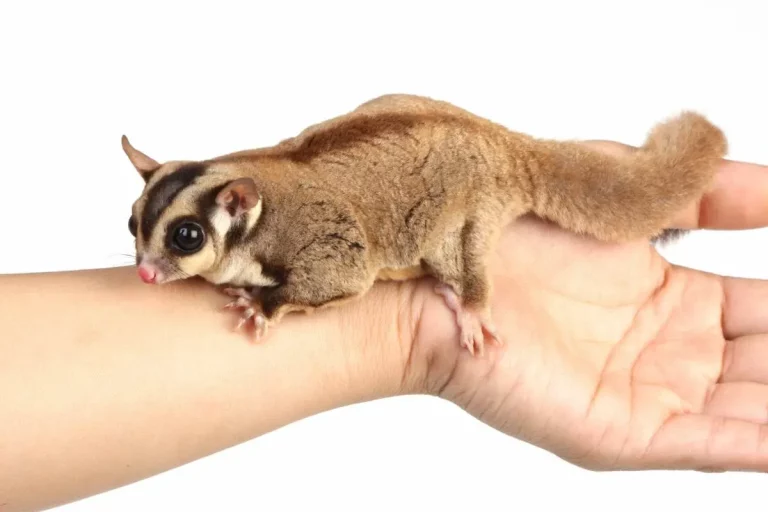Can Sugar Gliders Live Outside
Can Sugar Gliders Live Outside?
Sugar gliders are adorable and unique pets that have gained popularity in recent years. These small, nocturnal creatures are native to Australia, Indonesia, and New Guinea, but can they live outside as pets? In this article, we will explore whether sugar gliders can thrive in an outdoor environment and what factors you should consider before making that decision.
Understanding Sugar Gliders
Before we dive into the question of whether sugar gliders can live outside, let’s first understand what these animals need to thrive. Sugar gliders are social animals that live in colonies in the wild. They have a specialized diet that consists of a combination of fruits, vegetables, insects, and nectar. They have a unique ability to glide through the air using a flap of skin, called a patagium, that stretches from their wrists to their ankles.
In captivity, sugar gliders require a specialized diet that mimics their natural food sources. They need a large cage with plenty of vertical space to jump and glide. They also need toys and branches to climb on, as well as a cozy sleeping pouch where they can rest during the day.

Pros and Cons of Outdoor Living
Pros
1. Space: Sugar gliders are naturally active and curious creatures. Providing them with a larger outdoor enclosure can allow them to explore, climb, and glide to their heart’s content.
2. Natural Environment: In an outdoor enclosure, sugar gliders can experience natural sunlight, fresh air, and a more diverse range of sights, sounds, and smells. This can provide them with mental stimulation and enhance their overall well-being.
3. Temperature Regulation: Sugar gliders are highly sensitive to temperature fluctuations. If you live in a climate that closely resembles their natural habitat, an outdoor environment might provide a more stable and ideal temperature range for them.
Cons
1. Predators: Sugar gliders are small and defenseless, making them vulnerable to predators such as cats, dogs, birds, and even larger wildlife like raccoons or foxes. It can be challenging to provide them with a completely predator-proof enclosure in an outdoor setting.
2. Weather Extremes: While sugar gliders can handle a wide range of temperatures, extreme heat or cold can be harmful to them. Harsh weather conditions, such as heavy rains or strong winds, can also cause stress and discomfort.
3. Human Interaction: Sugar gliders are social animals that form strong bonds with their human caregivers. Keeping them outside may limit your opportunities for bonding and interaction, as they might become more wary of humans in a less controlled environment.
Considerations for Outdoor Living
If you are still considering keeping sugar gliders outside, there are several important factors to keep in mind:
1. Climate: Sugar gliders are native to warm, tropical climates. If you live in a region with harsh winters or extreme temperatures, it may not be suitable for them to live outside year-round.
2. Security: Building a secure outdoor enclosure is crucial to protect your sugar gliders from predators and ensure their safety. The enclosure should be escape-proof, have a solid roof, and be made of materials that cannot be easily chewed through.
3. Environmental Enrichment: To provide a stimulating outdoor environment, consider adding natural branches, climbing structures, and hiding spots in the enclosure. You can also plant sugar glider-safe trees and shrubs to mimic their natural habitat.
4. Monitoring: Regularly inspect the enclosure for any signs of damage or wear. Keep an eye out for potential hazards, such as toxic plants, unprotected electrical wires, or sharp edges.
Frequently Asked Questions
1.Can sugar gliders survive in the wild if released?
While sugar gliders have adapted to survive in the wild, releasing a captive-bred sugar glider into the wild is not recommended. They may not possess the necessary survival skills and instincts to thrive in their natural environment. Additionally, they can introduce diseases or disrupt ecosystems if released into non-native habitats.
2.Can sugar gliders be kept outdoors during the day and brought indoors at night?
Sugar gliders have specific light and dark cycles that regulate their sleep-wake patterns. Keeping them outside during the day and bringing them indoors at night can disrupt these cycles and potentially lead to health issues. It is best to provide a consistent environment for sugar gliders, either indoors or outdoors, to ensure their well-being.
3.Is it legal to keep a sugar glider outside as a pet?
The legality of keeping sugar gliders as pets and housing them outdoors varies by location. It is essential to check with your local authorities and consult relevant laws and regulations before deciding to keep sugar gliders outside.
Final Thoughts
While it is possible for sugar gliders to live outside, it is crucial to carefully consider the pros and cons, as well as the specific needs of these unique animals. Creating a suitable outdoor enclosure that provides security, environmental enrichment, and protection from the elements is essential for their well-being. Ultimately, the decision to keep sugar gliders outdoors should be based on their individual needs and your ability to provide a safe and enriching environment for them.







